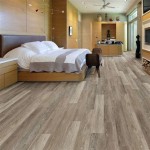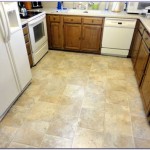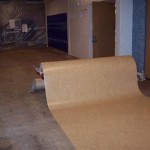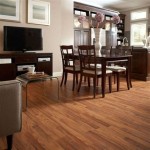Unfinished Red Oak Engineered Flooring: A Comprehensive Guide
Unfinished red oak engineered flooring presents a versatile and aesthetically pleasing option for residential and commercial spaces. Unlike prefinished flooring, unfinished planks arrive without a factory-applied stain or sealant. This characteristic grants homeowners and contractors the freedom to customize the floor's final appearance, ensuring it perfectly complements the surrounding décor and architectural style. The engineered construction offers enhanced stability compared to solid hardwood, making it suitable for a wider range of environments.
This article will delve into the various aspects of unfinished red oak engineered flooring, covering its advantages, installation procedures, finishing techniques, and maintenance considerations. Understanding these elements is crucial for making informed decisions and achieving a beautiful, durable, and long-lasting floor.
Understanding the Construction of Engineered Flooring
Engineered flooring differentiates itself from solid hardwood through its layered construction. Typically, an engineered plank comprises a top layer of hardwood veneer, in this case, red oak, adhered to a core of multiple layers of plywood or high-density fiberboard (HDF). This cross-directional layering provides significantly improved dimensional stability, making it less susceptible to expansion and contraction due to fluctuating humidity levels. This stability is particularly beneficial in areas with higher moisture content, such as basements or kitchens, where solid hardwood might be prone to warping or cupping.
The thickness of the red oak veneer, often referred to as the wear layer, is a critical factor in determining the flooring's longevity. A thicker wear layer allows for more sanding and refinishing over the floor's lifespan, extending its usability and retaining its aesthetic appeal. Conversely, a thinner wear layer might limit the number of refinishing cycles possible before the core material is exposed.
The core material also plays a significant role in the floor's overall performance. Plywood cores generally offer excellent moisture resistance and stability, while HDF cores provide a denser and more uniform surface. The choice between these core materials often depends on the specific application and the anticipated environmental conditions.
Advantages of Unfinished Red Oak Engineered Flooring
Choosing unfinished red oak engineered flooring offers several compelling advantages compared to both solid hardwood and prefinished options. The primary advantage lies in the unparalleled customization it provides.
Customization Options:
With unfinished flooring, the homeowner or contractor has complete control over the final stain color, sheen level, and protective finish. This allows for matching existing woodwork, creating a specific design aesthetic, or achieving a truly unique and personalized look. The ability to test different stain samples directly on the installed floorboards before committing to a final finish ensures optimal color accuracy and avoids potential discrepancies between swatch samples and the finished product.Seamless Finish:
Unlike prefinished flooring, which often exhibits beveled edges or micro-bevels between planks, unfinished flooring can be sanded and finished to create a perfectly smooth and seamless surface. This eliminates grooves or crevices where dirt and debris can accumulate, resulting in a cleaner and more hygienic floor. The smooth, unbroken surface also enhances the visual appeal, creating a more luxurious and refined look.Cost-Effectiveness:
While the initial cost of unfinished flooring might appear higher due to the added expense of sanding and finishing, it can often be more cost-effective in the long run. Prefinished flooring carries a premium due to the factory-applied finish and limited color options. Unfinished flooring allows for buying in bulk and choosing more affordable finishing products without compromising on the desired outcome.Repair and Refinishing:
When scratches, dents, or other damages occur, unfinished flooring provides a significant advantage in terms of repair and refinishing. Damaged areas can be seamlessly repaired and blended with the surrounding floor during the sanding and refinishing process. This ensures a uniform and consistent appearance across the entire floor surface, unlike prefinished flooring where matching the original finish can be challenging or impossible.Installation Considerations for Unfinished Engineered Flooring
Proper installation is crucial for achieving a long-lasting and aesthetically pleasing floor with unfinished red oak engineered flooring. The subfloor must be clean, level, and dry before installation can commence. Any imperfections or unevenness in the subfloor can telegraph through to the finished floor, resulting in an uneven surface and potential structural issues.
Acclimation:
Prior to installation, the flooring must be acclimated to the environment in which it will be installed. This involves storing the flooring in the room for several days to allow it to adjust to the temperature and humidity levels. This acclimation process helps to minimize expansion and contraction after installation, preventing gaps or buckling.Installation Methods:
Engineered flooring can be installed using several methods, including gluing, nailing, stapling, or floating. The choice of installation method depends on the type of subfloor, the thickness of the flooring, and the specific manufacturer's recommendations. Gluing is often preferred for concrete subfloors, while nailing or stapling is commonly used for wood subfloors. Floating installations involve interlocking the planks without directly adhering them to the subfloor, allowing for movement and accommodating slight variations in the subfloor.Expansion Gaps:
Maintaining adequate expansion gaps around the perimeter of the room and around any vertical obstructions, such as pipes or columns, is essential. These gaps allow the floor to expand and contract with changes in humidity without putting stress on the surrounding walls or structures. Failure to provide sufficient expansion gaps can lead to buckling or cracking of the flooring.Sanding and Finishing Unfinished Red Oak Engineered Flooring
The sanding and finishing process is where the true customization of unfinished red oak engineered flooring comes to life. The sanding process prepares the floor for the application of stain and finish, creating a smooth and uniform surface.
Sanding Process:
The sanding process typically involves using progressively finer grits of sandpaper to remove any imperfections, such as scratches, dents, or mill marks. A drum sander is generally used for the initial sanding passes, followed by an edger to sand along the edges of the room and in hard-to-reach areas. A final pass with a buffer equipped with a fine-grit screen ensures a perfectly smooth and even surface. Thorough dust removal after each sanding pass is crucial for achieving a flawless finish.Staining Options:
Red oak readily accepts a wide range of stains, allowing for achieving virtually any desired color. Water-based, oil-based, and gel stains are all viable options, each with its own advantages and disadvantages. Water-based stains tend to be lower in volatile organic compounds (VOCs) and offer faster drying times, while oil-based stains provide deeper penetration and richer color saturation. Gel stains are particularly effective for achieving uniform color on woods with varying grain patterns.Finishing Options:
The choice of finish is equally important, as it determines the floor's durability, sheen level, and resistance to wear and tear. Polyurethane finishes are a popular choice due to their durability and resistance to scratches and stains. Water-based polyurethanes offer lower VOCs and faster drying times compared to oil-based polyurethanes. Other finishing options include penetrating oils, which provide a more natural look and feel, and acid-cured finishes, which offer exceptional durability but require specialized application techniques and safety precautions. Applying multiple coats of finish is recommended to ensure adequate protection and longevity.Proper Ventilation:
Adequate ventilation is essential during the sanding and finishing process to minimize exposure to dust and fumes. Wearing appropriate personal protective equipment, such as a respirator and safety glasses, is also recommended.Maintenance and Care of Red Oak Engineered Flooring
Proper maintenance and care are essential for preserving the beauty and extending the lifespan of finished red oak engineered flooring. Regular cleaning and preventative measures can help to minimize wear and tear and maintain the floor's aesthetic appeal.
Regular Cleaning:
Regular sweeping or vacuuming is essential to remove dirt, dust, and debris that can scratch or dull the finish. A damp mop with a mild wood floor cleaner can be used to remove spills and stains. Avoid using excessive water or harsh chemicals, as these can damage the finish and potentially warp the wood.Preventative Measures:
Placing mats at entryways can help to trap dirt and debris before they are tracked onto the floor. Using furniture pads under chair legs and other heavy objects can prevent scratches and dents. Avoiding wearing shoes with high heels or cleats on the floor can also help to minimize damage.Refinishing:
Over time, even with diligent maintenance, the finish on red oak engineered flooring may become worn or scratched. When this occurs, refinishing may be necessary to restore the floor's original beauty. Depending on the thickness of the wear layer, the floor can be sanded and refinished multiple times. However, it is important to note that each sanding removes a portion of the wear layer, so excessive sanding should be avoided. Consulting with a professional flooring contractor is recommended to determine the appropriate refinishing approach and to ensure that the sanding process does not compromise the structural integrity of the flooring.
2 1 4 X 5 8 Red Oak Common Unfinished Engineered Hurst Hardwoods

6 X 3 4 Red Oak 1 Common Unfinished Solid Hardwood Flooring

Red Oak 3 Common Utility Grade Unfinished Solid Hardwood Flooring Floor Depot

3 1 4 X 5 8 Common Red Oak Unfinished Engineered Nature Wood Floors

3 8 X 2 Select Red Oak Unfinished Hardwood Flooring At Tongueandgroove Com

Unfinished Red Oak Flooring 1 Common Stonewoods Com

Unfinished Red Oak 3 1 4 X 18 75 Sq Ft Bundle

Red Oak Unfinished 1 Common Grade 3 4 X 7 8

5 X 3 4 Common Red Oak Unfinished Nature Wood Floors

Discount 2 1 4 X 5 8 Red Oak Select Better Unfinished Engineered Hardwood Flooring By Hurst Hardwoods








